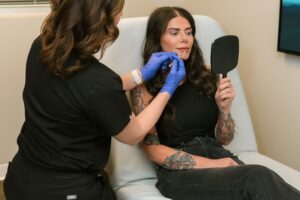Vitiligo, the condition marked by the loss of skin pigment resulting in distinctive white patches, affects thousands in Malaysia. While it poses no direct physical threat, its visible nature can profoundly impact self-confidence and social well-being. For many embarking on their treatment journey, topical creams serve as the first line of defense and a cornerstone of management. In Malaysia’s diverse healthcare landscape, understanding the types of creams available, their effectiveness, accessibility, and realistic expectations is crucial for patients seeking to regain skin harmony. This article delves deep into the world of topical vitiligo treatments in Malaysia.

Why Topical Creams? The Foundation of Vitiligo Management
Topical treatments are often the initial approach for vitiligo, especially for:
-
Limited or Localized Patches: When vitiligo affects a smaller percentage of the body surface area.
-
Sensitive Areas: Particularly effective for the face, neck, and skin folds.
-
Children: Often preferred as a first step due to their non-invasive nature.
-
Combination Therapy: Used alongside phototherapy or other treatments to enhance results.
Their primary goals are to:
-
Stop Disease Progression (Stabilize): Halt the immune attack on melanocytes.
-
Stimulate Repigmentation: Encourage remaining melanocytes to migrate and produce pigment within the depigmented patches.
-
Improve Cosmetic Appearance: Reduce the contrast between pigmented and depigmented skin.
The Arsenal of Topical Creams Available in Malaysia
Malaysian patients, accessing both public and private healthcare sectors, have several topical options:
-
Topical Corticosteroids (TCS):
-
How They Work: Powerful anti-inflammatory agents that suppress the local immune response attacking melanocytes. May also stimulate melanocyte activity.
-
Effectiveness: Often first-line due to lower cost. More effective on facial/neck vitiligo and newer patches. Response rates vary.
-
Availability: Widely available in government clinics/hospitals (Klinik Kesihatan, Hospital Dermatology departments) and private pharmacies with prescription. Common examples include Mometasone furoate, Betamethasone valerate, Clobetasol propionate (used very cautiously).
-
Crucial Considerations:
-
Potency Matters: Dermatologists prescribe specific potencies based on location and skin thickness (e.g., weaker for face, stronger for limbs).
-
Side Effects: Long-term or inappropriate use risks skin thinning (atrophy), stretch marks (striae), telangiectasia (visible blood vessels), acne, and even systemic absorption. Application is typically limited to 2-3 months on a specific area, followed by a break or switch.
-
Malaysian Context: Affordable and accessible, but requires strict medical supervision due to side effect risks.
-
-
-
Topical Calcineurin Inhibitors (TCIs – Tacrolimus & Pimecrolimus):
-
How They Work: Non-steroidal immunomodulators that specifically target the T-cells responsible for melanocyte destruction, reducing inflammation locally.
-
Effectiveness: Highly effective, particularly for facial, neck, and eyelid vitiligo – often outperforming steroids in these areas. Safer for longer-term use and sensitive skin. Good for children.
-
Availability: Available by prescription in the private sector (community pharmacies, hospital pharmacies). Brand names include Protopic (Tacrolimus) and Elidel (Pimecrolimus). Access in the public sector is improving but can be inconsistent; available in major hospital dermatology departments.
-
Crucial Considerations:
-
Safety Profile: No skin thinning risk, making them suitable for long-term maintenance and sensitive areas. Initial burning/itching is common but usually subsides. Sun protection is mandatory.
-
Cost: Significantly more expensive than corticosteroids in the private market (often RM100-300+ per tube).
-
Off-Label Use: While approved for eczema, their use for vitiligo is well-established but technically “off-label” in many regions, including Malaysia. Dermatologists commonly prescribe them based on strong evidence.
-
-
-
Topical Janus Kinase (JAK) Inhibitors (Ruxolitinib – Opzelura™):
-
How They Work: Represent a groundbreaking class. They block specific enzymes (JAK1/JAK2) involved in the inflammatory signaling pathways driving the autoimmune attack in vitiligo.
-
Effectiveness: Show exceptional promise, achieving significant repigmentation in clinical trials, even for areas traditionally resistant like hands/feet. Faster results than older topicals are often reported.
-
Availability: Newest addition! Approved in several countries (including US, EU, some ASEAN) and now available in leading private dermatology clinics and pharmacies in major Malaysian cities (e.g., Kuala Lumpur, Penang). Requires a specialist prescription.
-
Crucial Considerations:
-
Cost: Currently the most expensive topical option (typically RM800 – RM1500+ per tube).
-
Novelty: Long-term safety data specific to vitiligo is still accumulating, though the drug class is used systemically for other conditions.
-
Access: Limited to the private sector and specialist care. Insurance coverage is variable.
-
-
-
Vitamin D Analogues (Calcipotriol/Calcipotriene):
-
How They Work: Thought to modulate the immune response and promote melanocyte differentiation/migration.
-
Effectiveness: Generally considered less effective than TCS or TCIs alone. Often used in combination with corticosteroids or phototherapy to potentially boost results.
-
Availability: Available by prescription in both public (major hospitals) and private sectors.
-
Crucial Considerations: Usually an adjunctive therapy, not first-line monotherapy. Side effects include local irritation.
-
-
Other Topicals (Limited Role/Adjunctive):
-
Topical Antioxidants (e.g., Pseudocatalase): Theoretical role in combating oxidative stress, but robust evidence for significant repigmentation is lacking. Available in some specialty clinics/online.
-
Topical Prostaglandin E2/FP Analogs (e.g., Latanoprost): Primarily used for eyelash repigmentation. Limited evidence for skin patches. Available privately.
-
Access and Affordability in the Malaysian Context
-
Public Sector (Government Hospitals/Clinics):
-
Strengths: Highly subsidized cost for consultations and basic medications. Topical corticosteroids are widely accessible. Access to TCIs is improving in dermatology departments.
-
Limitations: Long waiting times for specialist appointments. Newer agents like JAK inhibitors are unavailable. Limited choice/formulations.
-
-
Private Sector:
-
Strengths: Faster access to specialists, wider range of treatments (all topical classes, including JAK inhibitors). Greater flexibility.
-
Limitations: Significant cost burden, especially for TCIs and JAK inhibitors. Insurance coverage for vitiligo topicals is inconsistent – often excluded as “cosmetic”.
-
-
Insurance: Crucially check your policy. Some comprehensive plans might cover TCIs or JAK inhibitors if linked to significant psychosocial impairment documented by a specialist, but pre-authorization is essential. Assume no coverage unless confirmed.
Maximizing the Effectiveness of Topical Creams: Practical Tips
-
Consistency is Paramount: Apply exactly as prescribed (amount, frequency, location). Skipping applications hinders results.
-
Patience is Essential: Repigmentation is slow. Expect to see results after 3-6 months of consistent use. Full effect can take 1-2 years.
-
Proper Application: Use a thin layer only on the depigmented patches. Wash hands before and after.
-
Sun Protection is Non-Negotiable: Depigmented skin burns easily. Apply high-SPF (50+) broad-spectrum sunscreen daily to all exposed skin, especially treated areas. This protects the skin and may enhance the effectiveness of some treatments (like TCIs). Reapply every 2 hours outdoors.
-
Monitor Side Effects: Report any skin thinning, persistent redness, burning, itching, or unusual reactions to your dermatologist immediately.
-
Regular Follow-ups: Essential for monitoring progress, adjusting treatment, managing side effects, and assessing stability for potential future therapies.
-
Combination Therapy: Topicals often work best combined with phototherapy (NB-UVB, Excimer). Discuss this with your dermatologist.
The Reality Check: Managing Expectations
-
No Guaranteed Cure: Topicals aim for control and improvement, not always complete reversal.
-
Variable Response: Effectiveness differs greatly between individuals and patch locations (face best, hands/feet hardest).
-
Stability Matters: Creams work best when the vitiligo is stable (not spreading). Active spreading may require systemic therapy first.
-
Maintenance May Be Needed: Repigmentation can fade; some patients need ongoing low-frequency application to maintain results.
-
Complementary Approach: Topicals are powerful tools but often part of a larger management plan including sun protection and psychosocial support.
Conclusion: Empowerment Through Knowledge
Navigating topical creams for vitiligo in Malaysia requires understanding the options, their mechanisms, access pathways, costs, and realistic outcomes. From the affordability of corticosteroids in the public system to the cutting-edge potential of JAK inhibitors in private clinics, Malaysian patients have a growing palette of topical treatments. Working closely with a dermatologist, either in the public or private sector, is vital to select the right cream, use it safely and effectively, and integrate it into a comprehensive management plan. By combining medical treatment with diligent sun protection, patience, and access to psychosocial support, individuals with vitiligo can actively work towards repigmentation and improved quality of life.
5 FAQs on Vitiligo Creams in Malaysia
-
Q: What is the strongest/best cream for vitiligo I can get in Malaysia? Is Opzelura available?
A: There’s no single “strongest” or “best” cream for everyone. Effectiveness depends on your vitiligo type, location, and skin. Topical JAK inhibitors (Ruxolitinib – Opzelura™) represent the newest and often most potent option, showing significant repigmentation even in difficult areas. Yes, Opzelura is available in Malaysia, but only through prescription from dermatologists in leading private hospitals and clinics in major cities. However, Topical Calcineurin Inhibitors (Protopic, Elidel) remain highly effective, especially for the face/neck, and are more widely accessible privately. Potent corticosteroids can be effective initially but carry significant side effect risks with long-term use. Your dermatologist will determine the most appropriate “strongest” option for your specific case. -
Q: Can I buy vitiligo creams like Protopic or Opzelura over-the-counter (OTC) in Malaysian pharmacies?
A: No. All prescription-strength vitiligo creams – including Protopic (Tacrolimus), Elidel (Pimecrolimus), Opzelura (Ruxolitinib), and potent corticosteroids – require a doctor’s prescription in Malaysia. You cannot purchase them legally over-the-counter. Beware of online sellers or unauthorized sources claiming otherwise – these could be counterfeit, unsafe, or illegal. Mild moisturizers or sunscreen can be bought OTC, but medicated creams for repigmentation need a prescription. -
Q: Are there any effective traditional/herbal creams for vitiligo sold in Malaysia?
A: Approach with extreme caution. While traditional remedies (e.g., specific oils, pastes like “Baba Vitiligo Cream” or various herbs) are marketed, there is very limited robust scientific evidence proving their safety and consistent effectiveness for significant vitiligo repigmentation. Significant risks include:-
Skin Irritation/Allergy: Can trigger the Koebner phenomenon, causing new vitiligo patches on damaged skin.
-
Ineffectiveness & Wasted Time: Delays starting proven medical treatments when they are most likely to help (early stages).
-
Unknown Ingredients/Contamination: Can cause serious side effects or interactions with prescribed medications.
-
Lack of Regulation: Quality, purity, and safety are not guaranteed. Always consult your dermatologist before trying any alternative cream. Evidence-based prescription topicals are the recommended approach.
-
-
Q: Why isn’t my vitiligo cream working? I’ve been using it for months.
A: Several factors could contribute:-
Location: Creams work best on the face/neck. Areas with fewer hair follicles (hands, feet, lips, bony areas) are notoriously resistant.
-
Duration: Repigmentation is slow. 3-6 months is often needed to see initial changes; 1-2 years for more significant results. Be patient and consistent.
-
Instability: If your vitiligo is still actively spreading, creams might not be effective until progression is halted, which may require oral medication.
-
Incorrect Use: Not applying enough, skipping applications, or not applying only to the white patches.
-
Need for Combination: Your vitiligo might respond better to creams combined with phototherapy (light treatment).
-
Natural Treatment Limits: Some patches may not fully repigment. Discuss progress and alternatives with your dermatologist if the response is minimal after 6-12 months of correct use.
-
-
Q: How much do vitiligo creams cost in Malaysia? Does insurance cover them?
A: Costs vary dramatically:-
Public Sector (Govt Hospitals): Heavily subsidized. Basic corticosteroids cost very little (<RM20). TCIs might be available at subsidized rates in dermatology departments.
-
Private Sector:
-
Corticosteroids: RM20 – RM100+ (depending on type/size).
-
TCIs (Protopic/Elidel): RM100 – RM300+ per tube (15-30g).
-
JAK Inhibitor (Opzelura): RM800 – RM1500+ per tube (60g).
-
-
Insurance Coverage: This is a major challenge. Many standard health insurance plans in Malaysia exclude coverage for vitiligo treatments, deeming them “cosmetic.” However:
-
Some comprehensive plans might cover part of the cost if the dermatologist provides strong documentation linking the treatment to significant psychological distress or functional impairment (e.g., photosensitivity).
-
Always check your specific policy wording before starting expensive treatments.
-
Discuss pre-authorization with your dermatologist and insurer. Don’t assume coverage. Be prepared for significant out-of-pocket costs, especially for newer agents like Opzelura.
-
-


